These are our fun and interesting facts about Colombia that you need to know, inspired by our many travels across this fascinating country.
Pablo Escobar…most people will have heard about Colombia because of him and the Narcos Netflix series they made about his life.
But Colombia is SOOOO much more than this!
Whilst the snow industry brought Colombia to a standstill in the 1980s, 1990s, and 2000s making it a no-go area, it has since undergone a HUGE transformation. It is now one of the safest places to visit in South America, particularly for LGBTQ travelers – much to our delight!
We spent 6 months traveling in Colombia and completely fell in love! We visited many places including Cartagena, Medellin, and the big capital, Bogota. We discovered a very diverse country that offers so much, from Caribbean beaches, adventures in the Andes, and tropical jungle experiences – with some of the friendliest people you'll ever meet. This is one ethnically diverse population that loves receiving visitors.
These are some of our favorite interesting facts about Colombia, which we hope inspires your own trip to the “gateway of South America”.

Advice for LGBTQ travelers to Colombia
Colombia has swiftly evolved to become one of the safest and most gay-friendly places in Latin America. We certainly rank it as one of the most LGBTQ friendly countries in the world. As a gay couple, we loved traveling in Colombia and found Bogota and Medellin to be particularly welcoming towards us as LGBTQ travelers. However, the coastal regions are famous for being more conservative, so whilst touristy Cartagena is fine, when heading to more remote areas there, be cautious of PDAs and call ahead if you're unsure as to whether your hotel is gay friendly or not. Read more in our interview with Jesus from Barranquilla about gay life in Colombia.
1. Colombia is named after… Christopher Columbus!
Christopher Columbus was an Italian explorer who was sponsored by the Catholic monarchs Queen Isabella I and King Ferdinand II of Spain to travel west. The main purpose of the journey was to search for a western route to the East Indies in order to profit from the spice trade.
Of course, he instead bumped into the Americas, specifically an island in the Bahamas, and the following period of conquest/colonization of the Americas changed the world. While many credit Columbus with ‘discovering' the Americas, in reality, the Norse Vikings had been there hundreds of years before and, of course, plenty of indigenous peoples were already living there even before that.
The name Colombia once meant all of the New World. What is now Colombia used to be called the Republic of New Grenada, but changed its name to the Grenadine Confederation, then to the United States of Colombia and, eventually, the Republic of Colombia.
So while Colombia is correct, technically the country's full name today is the Republic of Colombia.
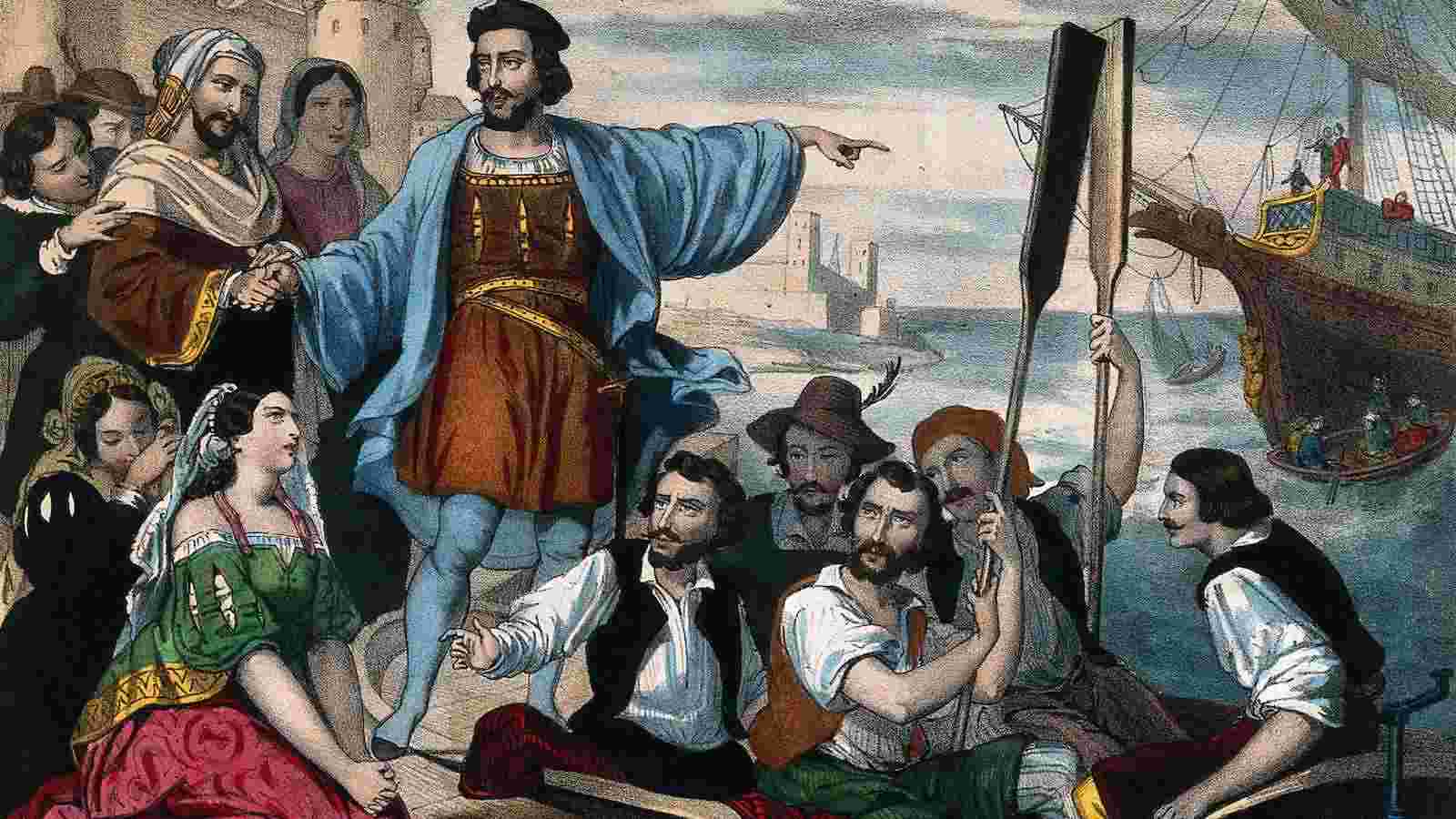
2. Colombia is the world's largest exporter of emeralds
Colombia produces about 70-90% of the world's emeralds, and Colombian emeralds are known for being more beautiful than ones from most other countries. For thousands of years, emeralds were more sought after (and expensive) than any other minerals. Even today, the purest and most vividly green emeralds can fetch a higher price than diamonds – talk about green with envy!
One of the reasons Colombian emeralds are thought to be the best is because they are found in sedimentary host rock rather than igneous rock, which makes them generally purer than emeralds from other regions. Colombia has produced some of the most famous emeralds as well, like the Duke of Devonshire Emerald which is on display at the Natural History Museum in London and the Tena Emerald, which is the most valuable emerald in the world.
The majority of Colombia's emerald mines are located in the eastern part of the Andes, near Boyacá and Cundinamarca. If you're looking to purchase some yourself, you can head to Bogota since most emeralds will pass through the capital city.
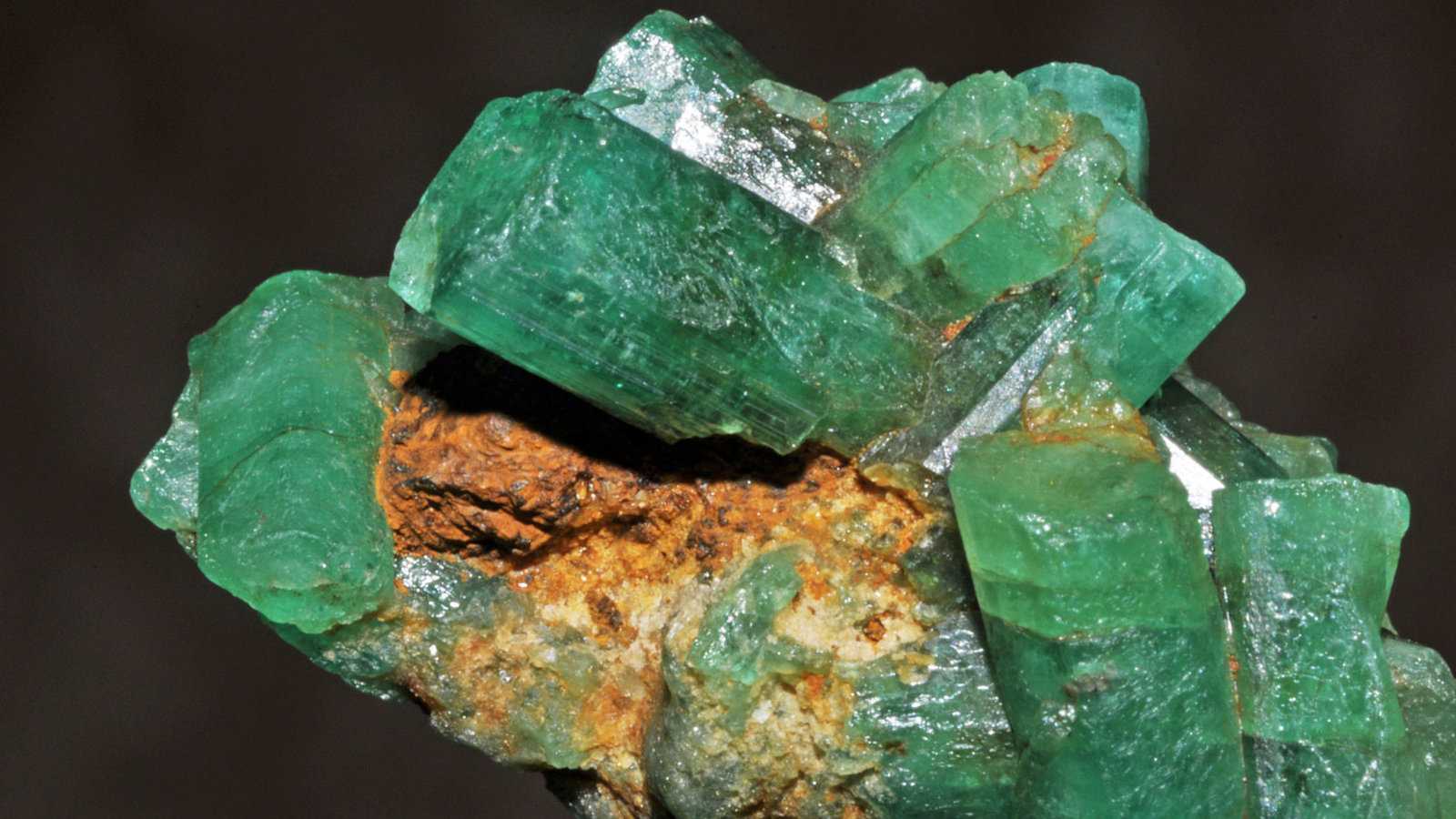
3. Colombia is a country with no seasons
The lowest part of Colombia sits right on top of the equator which means that the country doesn't really experience seasons the way ones further from the equator do. While Colombia does have different regions, with tropical rainforest, savanna, steppe, desert and mountain climates within those – the general temperatures in each region don't change much during the entire year.
In fact, the only main thing that changes in Colombia due to weather is how much rain there is. Technically you can say that Colombia experiences two seasons, dry and cloudy, but even then there may not be much in the way of change.
Of course, as you travel around Colombia you will experience temperature differences in the regions, based on the elevation. The higher up you go, the colder it gets! But generally, Colombia as a whole is a lovely warm destination with no miserable winters or fierce summers. We like that!
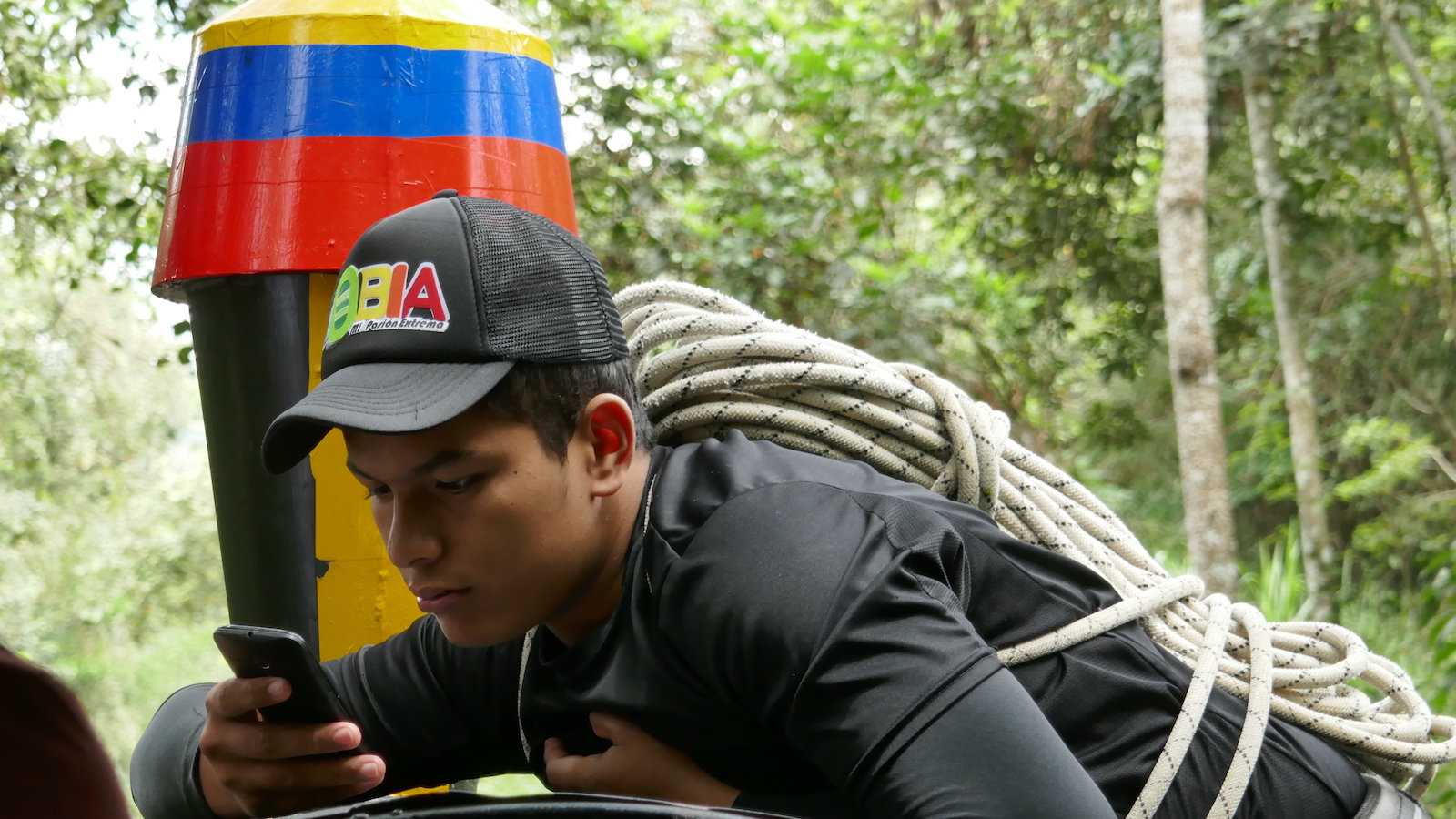
4. The orchid is the national flower of Colombia
On the subject of flowers, Colombia's national flower is the orchid Cattleya trianae, also called the Orquídia Tricolor by Colombians. It is native species to Colombia and was chosen as the national flower in November 1936 because the lower part of its flower can appear yellow, blue, and red, which are conveniently the colors of the Colombian flag.
Another trivial orchid fact to note is that its scientific name, “Cattleya trianae”, is partly named after a 19th-century Colombian botanist and physician called, Jose Jeronimo Triana.
The Botanical Garden of Medellin is one of the best places we recommend heading to see. It has one of the most impressive collections of orchids we've ever seen, preserved in an architectural space called the “Orchideorama”. Medellin has the ideal climate for orchids, which thrive at around 1,500-2,000 meters (4,920-6560 feet) above sea level and in a cloud forest. We visited during the Flower Festival of Medellin when intricate orchid displays are proudly shown off across the entire city.
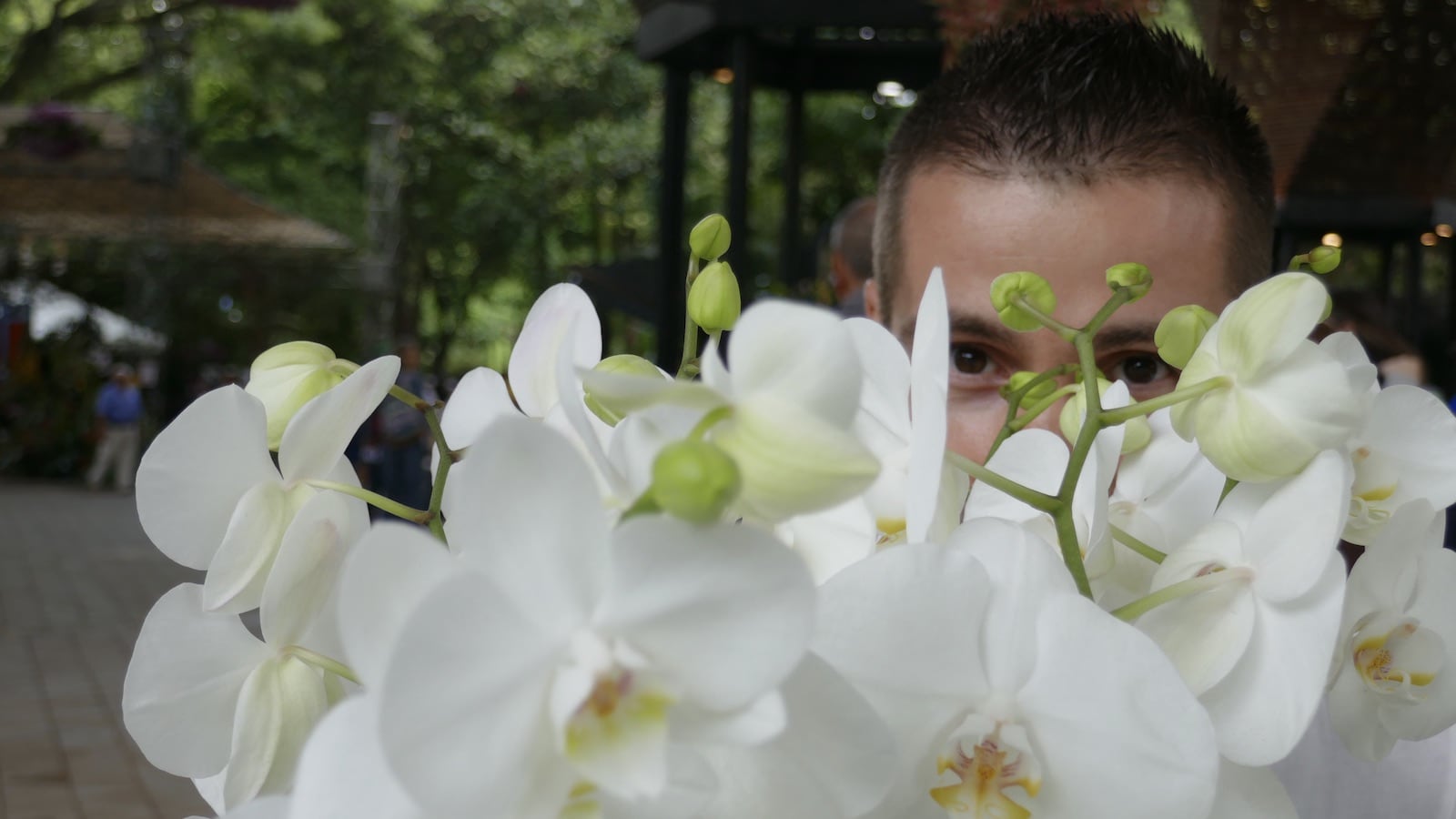
5. Botero: the most famous Colombian artist
Fernando Botero – one of the most famous Colombian artists has become famous around the world for his unusual portrayal of extravagant figures!
To give you an idea, in downtown Medellin, head over to Plaza Botero for the quirkiest outdoor museum you'll ever see – Botero's crazy pieces of art are brought to life as exaggerated bronze statues. They're quite hilarious and worth seeing: imagine a giant Muscle Mary-like Roman soldier with a tiny one-eyed monster or a large fat woman eating grapes, sat atop a tiny donkey struggling to support her weight.
In the capital, Bogota, be sure to check out the Botero Museum where you can giggle at more of his unique artwork, which includes among other things, a fat Mona Lisa with a pretty enlarged head! The museum also includes a whole range of other eccentric Botero artwork, as well as pieces of Monet's and Picasso's artwork donated by him.
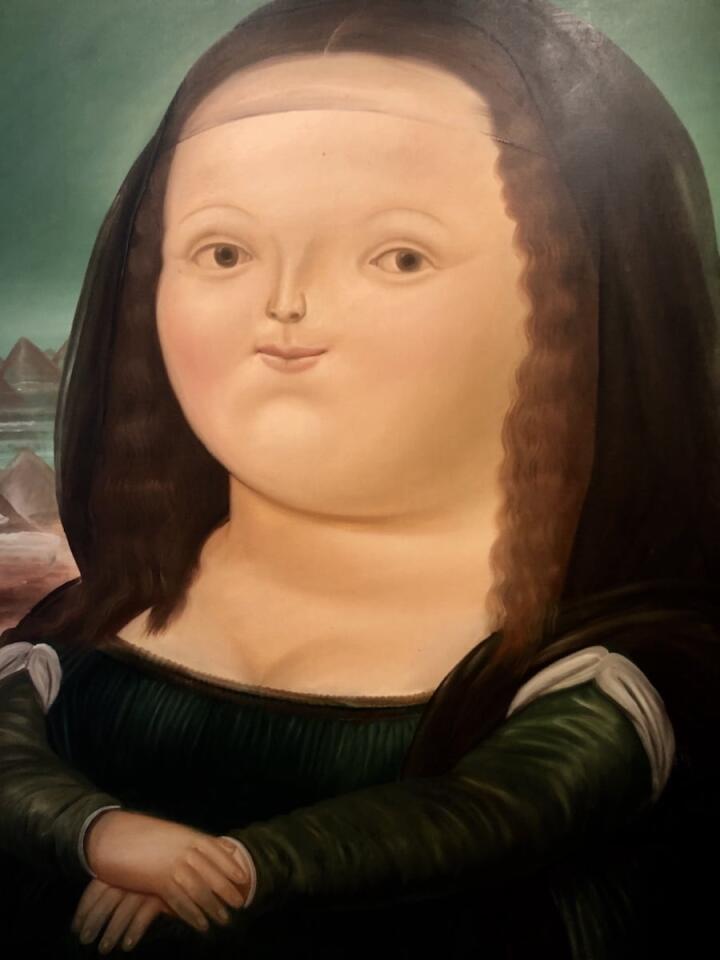
6. Colombians are the best dancers in South America!
We called it. You may disagree with us about this, but following our big trip across South America, the one big takeaway we got about Colombians is that these guys KNOW how to groove! Music and dancing is at the heart of everything they do, and they are really good at it! Even some of the most famous Latino singers in the world are Colombian – Shakira, Maluma, Juanes, Carlos Vives, J Balvin to name a few.
Whatever age, whatever gender, every Colombian we hung out with knew how to bust out a few salsa, champeta, and cumbia moves. Dancing is so ingrained in Colombian culture that each region of the country even has its own dance specialty usually with a large festival to celebrate it. The most famous and talked about is the salsa festivals of Cali, which kick off on Christmas day.
Other popular music and dance festivals that take place in Colombia, which are worth planning your visit around includes the big carnival in Barranquilla in February/March and the Flower Festival in Medellin in August. Watch our vlog about the Flower Festival to learn more about it:
7. The largest gay club in Latin America is in Colombia
We love the gay scene of Bogota because of Theatron!
Every Saturday evening, this huge building opens its doors and becomes a mega-club paradise land for the LGBTQ community, with a capacity for 5,000 people, spread over 13 mini clubs on 5 floors. Each mini club has its own theme, for example, one room is devoted to 1980s hits, another to salsa music, there’s one which is men only, another which is female only, and many many more. Entry costs 48,000 pesos ($16/£12) per person, which includes an open bar until 2 am, however, the party continues until the very early hours.
Theatron has a castle-like architecture with a pretty epic dance floor production on the main stage. It is housed in a former theatre hall, which was converted into a nightclub back in 2002. It truly is a remarkable clubbing experience we think everyone visiting Bogota should check out!
Whilst it may be the largest gay club in South America, Theatron certainly ranks as one of the best clubs we've ever been to!
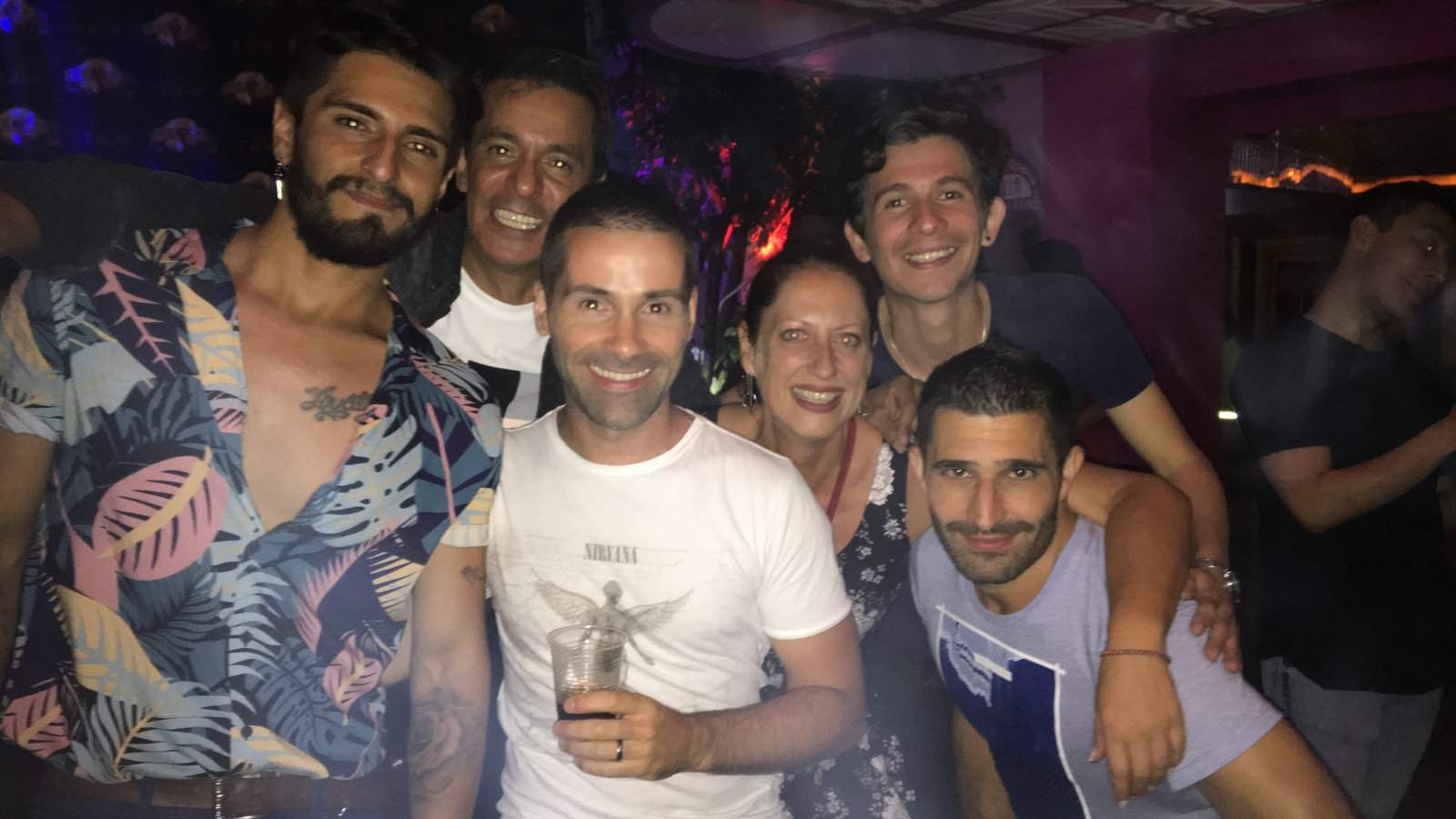
8. Colombia is the third largest coffee producer in the world
Colombia is the third-largest exporter of coffee in the world after Brazil and Vietnam, as well as the highest exporter of the arabica bean. In 2011, UNESCO declared the “Coffee Cultural Landscape” of Colombia a World Heritage site. One of the reasons Colombia produces such excellent coffee is because the country's geography and climate are almost perfect for growing coffee.
We're talking tropical mountains with perfect soil, plenty of rain and a mild climate that provides enough sunlight in between the rain to grow some of the richest coffee in the world. Colombian coffee is 100% arabica, which is sweeter and lighter than the robusta variety.
Another reason Colombian coffee is so good is because it is all picked by hand. Yep, that's right, pretty much all the coffee farmers in Colombia pick their beans by hand, which means they never pick any beans that aren't exactly ripe. In some cases, the human hand is by far better than a machine!

9. Colombia has the tallest palm trees in the world
In the Colombian Andes, you can find the Los Nevados National Natural Park, and inside that you can find a valley known as Valle de Cocora. This sheltered range is home to the tallest palm trees in the world, Quindío wax palms that can reach up to 60 meters (196 feet) tall. There are about 14 species of Wax Palm in the world and 7 of them can be found in Colombia. In fact, the wax palm is Colombia's national tree!
The Quindío palm looks a bit like the Truffula trees from Dr Seuss's book The Lorax since it's so tall and straight with little puffs of leaves up on top. Just like the Truffula trees, the Quindío palms were endangered until the Colombian government turned the valley into a wildlife sanctuary.
Endangered birds like the yellow-eared parrot live in the trees, as well as toucans and jays. The birds eat the red fruits and spread the seeds around, which helps to grow more. It's just the circle of life!
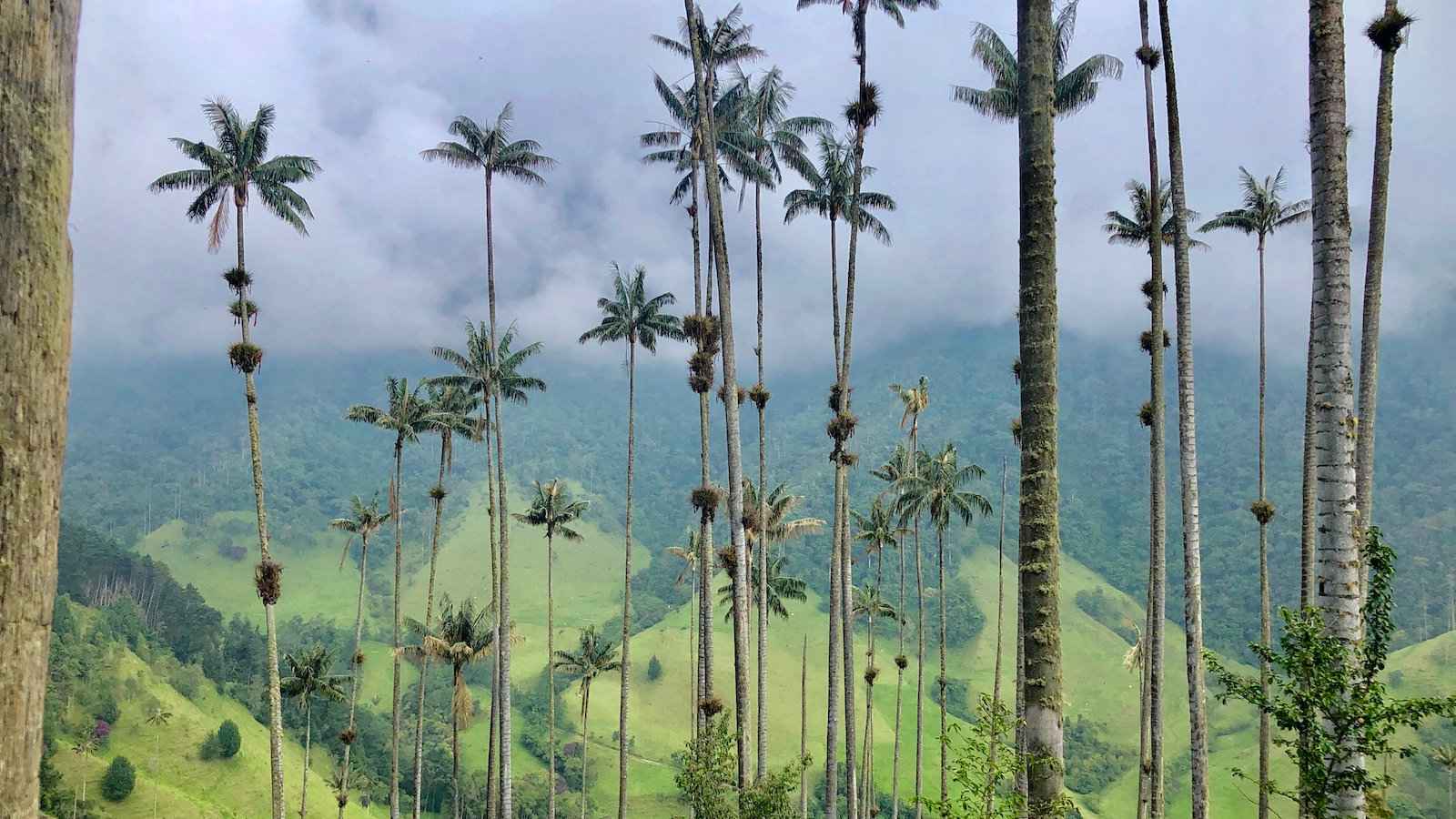
10. The second most biodiverse country in the world
Colombia is the second most biodiverse country in the world, only behind Brazil which is 10 times its size, and one of only 17 “megadiverse” countries. It has the highest amount of species by area in the world, including more species of bird than all of Europe and North America combined.
Think of it this way, about 10% of the species on Earth, are found in Colombia. This includes 10% of all the world's mammals, 14% of all the amphibians and a whopping 18% of all the birds. That's all the more impressive when you remember that the country is only classified as intermediate in size.
Basically, if you are into animals of all shapes and sizes, travel to Colombia! It's also home to the most endemic species (only found in one place) of butterflies anywhere in the world, and the most orchid species. As if we needed another excuse to go searching for pretty and colorful things there!
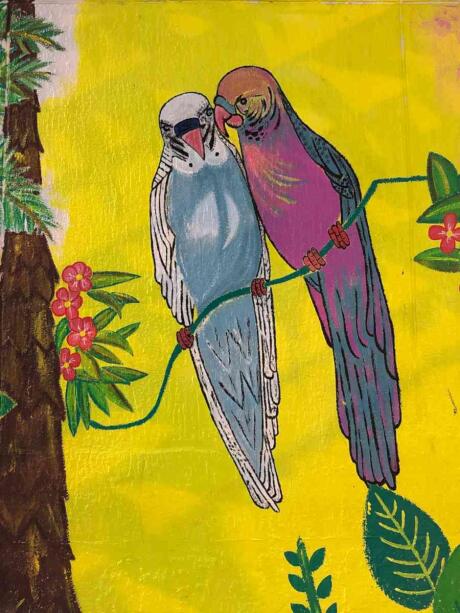
11. It is the only country in South America to have both a Pacific and an Atlantic coastline
Ok, so technically the Caribbean coastal region borders Colombia on the north, but the Caribbean Sea is a part of the Atlantic Ocean. The Pacific Coastal region of Colombia is very humid and experiences some of the most rain in the world. As you might imagine, it's not the most popular for holidaymakers, but it is one of the most biodiverse spots in the world.
While the Caribbean coastal region of Colombia is also humid, it's also much more popular with people living and holidaying along the stunning yet calm coastline. We loved our time exploring the gay friendly coastal cities of Cartagena and Barranquilla, which hosts an incredible Carnival every year.
The Caribbean coast of Colombia is a great base for exploring nearby islands – think white sands, turquoise waters and palm trees, with no other people to disturb you. It's also perfect for snorkelling and seeing plenty of pretty underwater life!
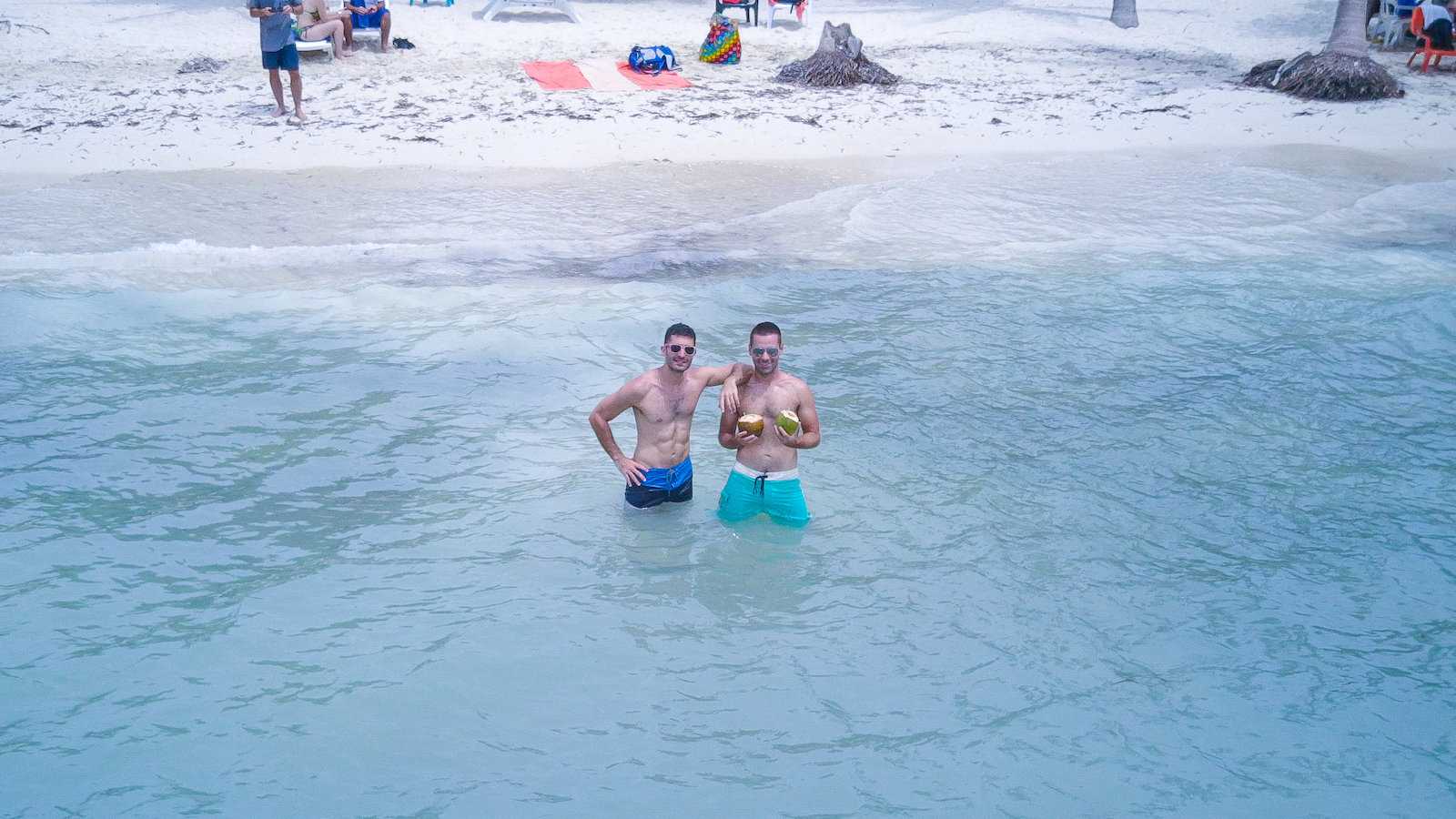
12. Colombians use their lips to point at things
Here's a funny one for you, did you know that when Colombians indicate where something is, they usually use their lips to point rather than a finger? No? We didn't either, and were quite confused when it seemed like lots of the locals were asking us for a kiss in quite an exaggerated manner!
Luckily, we love learning how to communicate with the locals when we are travelling, whether that just means the language or if there are also cultural differences in gestures. Colombians, in general, are very expressive even without speaking, with quite a few gestures you will need to translate when you first arrive.
But now, thanks to us, you are in the know and can pass as a local Colombian when you visit if you use the lip point instead of your hands. I mean, it's actually a bit more discrete if you're trying to point something out without being totally obvious!
13. Aguardiente… is Colombia's national drink!
Everywhere you go in Colombia you are likely to see bottles of aguardiente. Aguardiente is exactly what it sounds like if you know Spanish – burning water. Basically, it means fire-water in English and we bet you can figure out what kind of drink firewater is!
Colombian aguardiente is also sometimes called guaro, which comes from the Quechua word for sugar water: warapu. It's one of the items Christopher Columbus brought back home after “discovering” the Americas. As the national drink, it's definitely the most popular, with no Colombian celebration complete without plenty of whichever brand is favored in each region.
Aguardiente is mostly made from sugar and flavored with aniseed over a base of tropical fruit. It tastes similar to rum but isn't quite as sweet. Usually, it doesn't work too well as a base for cocktails, although we did enjoy aguardiente with some fresh pineapple and lime juice.
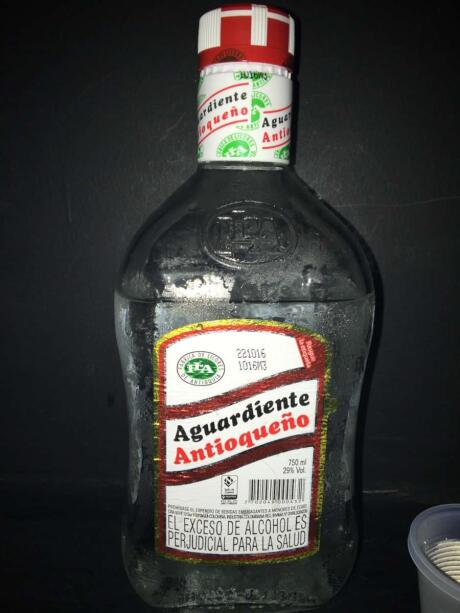
14. No Dar Papaya: don't show off your Papaya…!
No Dar Papaya is a common Colombian phrase which literally translates to: don't show off your papaya! In other words, “keep your valuables out of sight to prevent them from being stolen”!
As well as being a fun graffiti to see in downtown Medellin or Bogota, it's also a popular phrase to use as we found out…
…one time in a cafe in the pretty downtown Candelaria district of Bogota, Stefan left his bag in the nearby seat and popped to the toilet. Upon returning, the bag had disappeared…after an afternoon spent running around with policemen and looking at the CCTV footage in the cafe, we spotted a young girl snatching it. The bag was gone, but successful travel insurance was thankfully made later on…but once the friendly policemen finished writing up the report for our insurance claim, he looked Stefan in the eye, and gave him this sound advice:
No Dar Papaya!
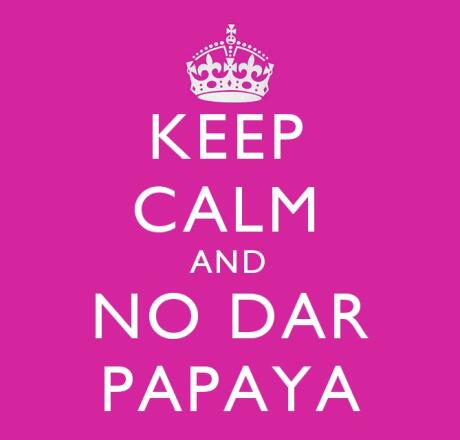
15. A paja is not a straw in Colombia
Careful when you're using Google translate to order a straw in a restaurant here: in one bar in Bogota, Stefan wanted a straw for his mojito. He'd forgotten the Spanish word for it, so he checked on Google translate, which suggested: “paja” (see screenshot below). For the record, paja is the correct Spanish word for straw assuming you're using said Spanish word in Spain…
…so Stefan proudly turned to the young pretty waiter boy and asked him for a paja. The waiter suddenly blushed, then went silent and ran to the more senior waitress in a state of shy giggles and sent her over to speak to us. Thankfully she spoke English and explained to us that in Colombia, a paja is the word for a wank…!
So, if you want to order a straw in Colombia, the correct word to use is a pitillo. If you're heading to Puerto Rico however, you need to change that to a sorbeto because over there, a pilillo is a dona juanita…
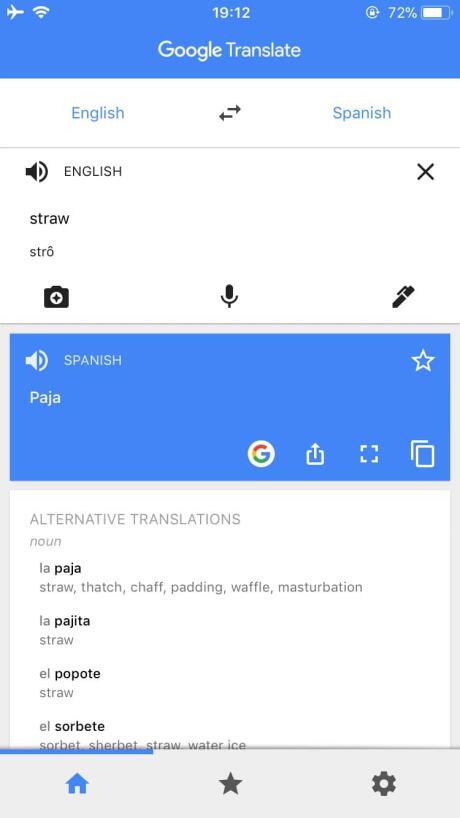
16. Tejo is the national sport of Colombia
While soccer is the most popular sport in Colombia it is Tejo that has earned the title of the country's national sport. Tejo is a team sport that involves throwing a small puck (called a Tejo) at a target that's about 18.5 meters (60 feet) away. The target is in the middle of a one-meter by one-meter board covered with clay and set at a forty-five-degree angle.
One of the most interesting things about Tejo is that there are usually small objects filled with gunpowder placed around the target, which explode on impact making a loud noise. Gotta keep the players on their toes right?!
No one is sure exactly where Tejo comes from, although there are numerous theories. It is generally accepted that it originated amongst native aboriginals before Columbus arrived in the Americas, so many Colombians see it as a way to keep their pre-Columbian culture alive. While soccer is bigger, there are still a lot of sponsored teams for Tejo both within Colombia and in surrounding countries.
17. A mountain above the blue waters of the Caribbean Sea
The Andes Mountain range extends through Colombia, but they're not the highest mountains in the country. That title goes to the Sierra Nevada de Santa Marta, which rises to more than 5,700 meters (about 18,942 feet) above the Caribbean Sea and stands by itself on the northern tip of the country.
As well as being higher than the Andes it's also one of the highest coastal mountain ranges in the world, as mountain ranges are usually found much further from the ocean. The Sierra Nevada de Santa Marta is just 42 kilometers (26 miles) away from the sea.
There's much more to the Sierra Nevada de Santa Marta than just being high and close to the ocean. It's the source of 36 different rivers and one of the most biodiverse spots in an already very biodiverse country. The mountain is covered in tropical rainforest and home to many endemic (not found anywhere else) plants, birds and mammals.
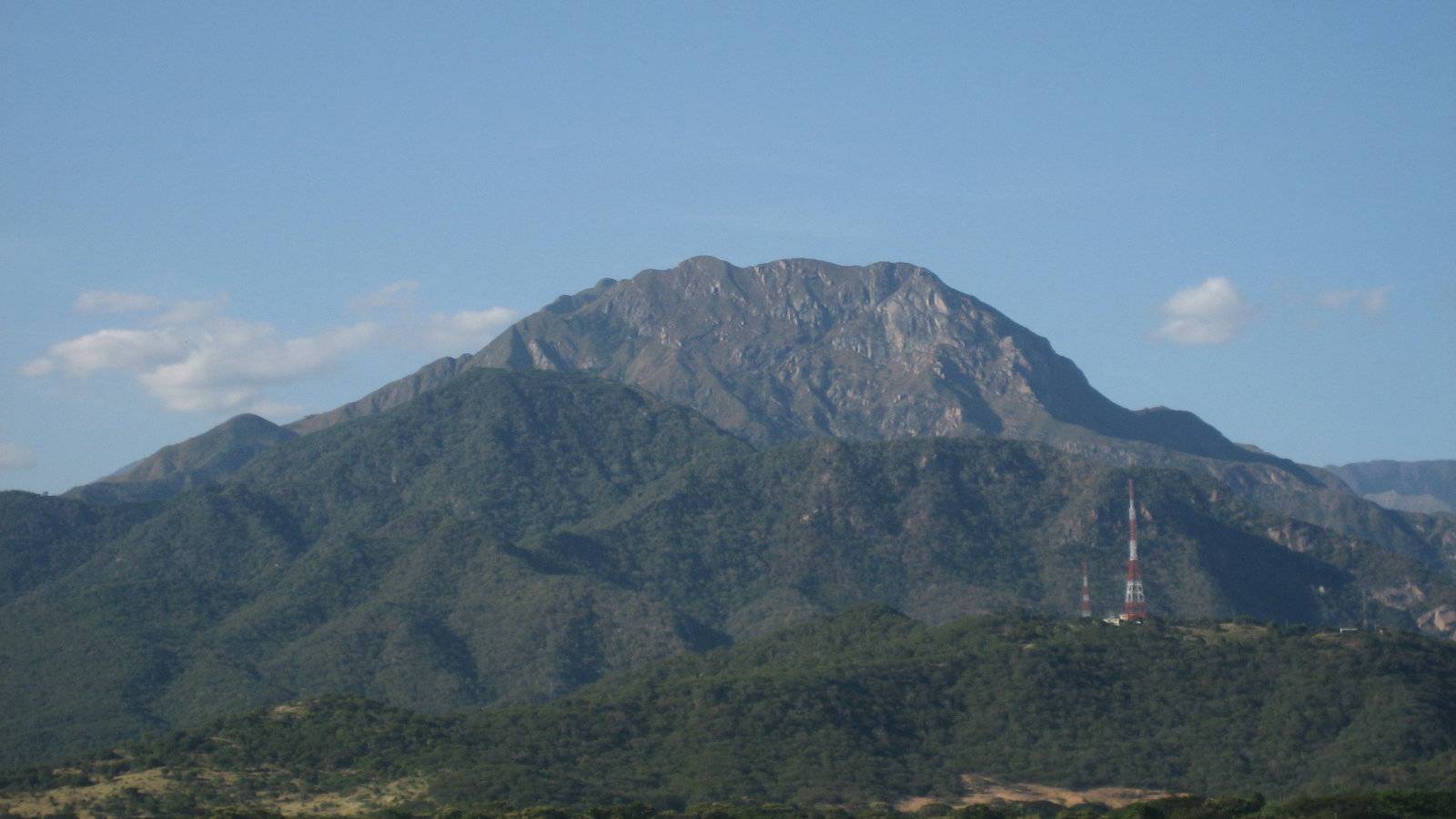
18. In Colombia, the National Anthem is played twice every day!
While you might think of Colombian music and immediately think of Shakira, you can't overlook the country's beautiful national anthem. It is actually mandatory for radio and public television in Colombia to play the national anthem every day at 6 am and 6 pm, although most Colombians don't see that as a bad thing.
The Colombian National Anthem originated from a poem written by Rafael Nuñez, an author, lawyer, journalist and politician. He served as President of Colombia between 1880 – 1882 and then again from 1884 – 1894. José Domingo Torres, an actor from Bogotá, asked his friend, Italian opera singer Oreste Sindici, to set the poem to music. The result was officially adopted as the national anthem in 1920 although it wasn't until 1995 that the rule about playing it twice a day was brought in.
Colombians in general are very patriotic and passionate about their country. So it makes sense that they would embrace a song all about their history while mentioning famous places and events.
19. Colombia has a dedicated day for friendship and love
Traditionally across North America and Europe, we celebrate Valentine's Day on the 14th of February. The Colombians however have a far more charming take on this. Instead of the 14th of Feb, they celebrate the El Dia Del Amor y Amistad (the Day of Love and Friendship) on the 3rd Saturday of September.
Usually, Colombians celebrate El Dia Del Amor y Amistad with both loved ones and, with friends. The tradition is to have a secret friend (‘amigo secreto') game with your group of friends, family, or co-workers, similar to a Secret Santa. At the beginning of the month, they each pick a name and anonymously give a present to that person. Then on the actual amor y amistad day later in the month, they reveal their identity to that person. We found this to be such a beautiful way to celebrate Valentine's Day – yes you get to celebrate it with your loved one, but the fact that it also celebrates friendship is brilliant!
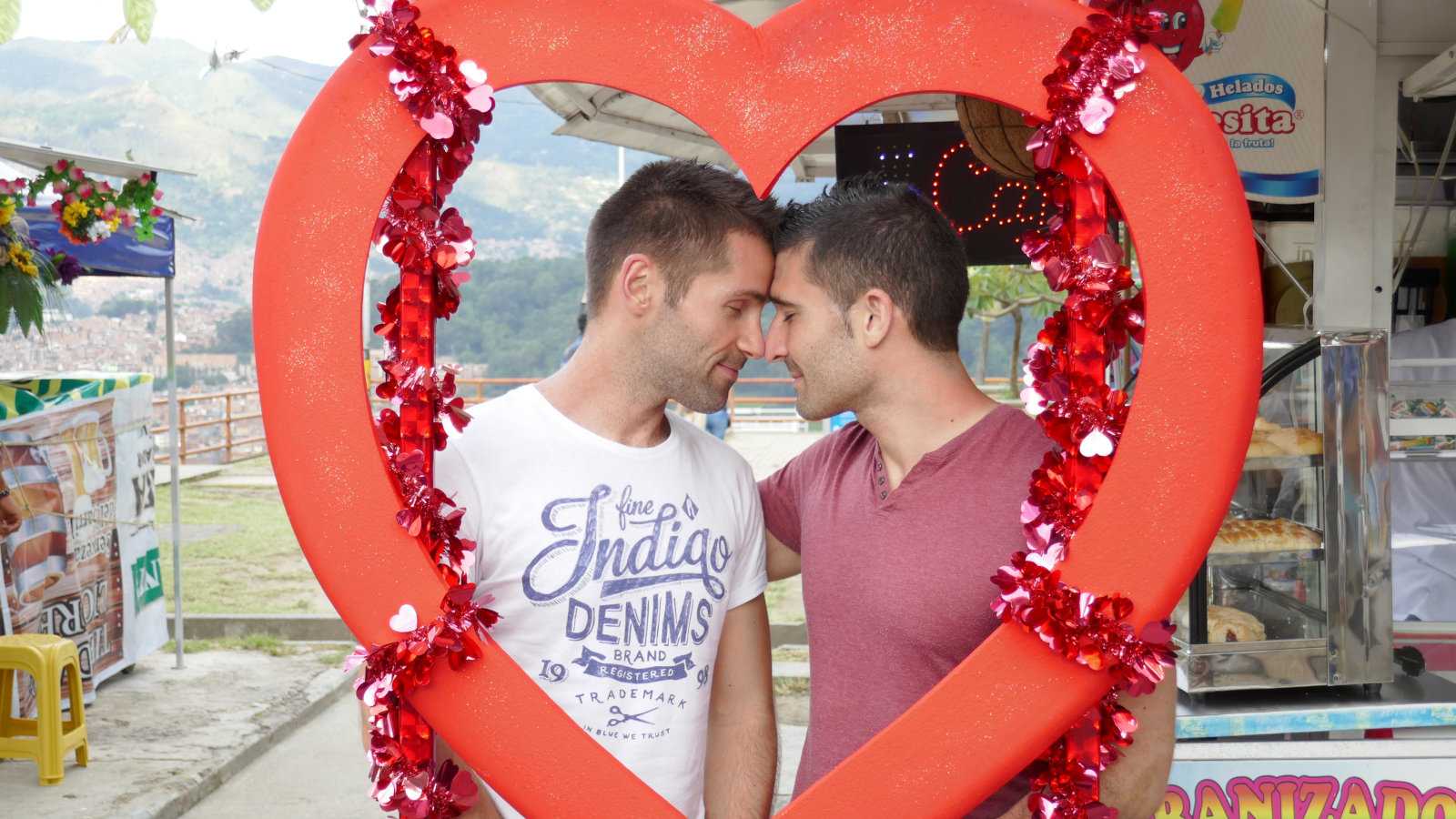
20. A strange tradition involving donkeys!
We were having drinks with our paisa friends in Medellin, comparing all the different cultural facets of Colombian life. Suddenly one of them told us to watch out for the costeño boys when heading up to Cartagena.
Why? we asked.
“Cause they screw donkeys!”
Shocked that they could be so rude about their fellow countrymen, we Googled this and discovered that in small coastal towns and villages around Barranquilla and Cartagena, this is actually a thing!
Little boys in these small communities are taught that women are extremely sacred and untouchable until they're married. But with a donkey, no wooing is required, they don't talk back to you and it also alleged that it will make your King Dong bigger!! In these small communities, doing it with a donkey is even considered a rite of passage – an important tradition to prepare young boys for adulthood!
Don't believe us? Watch this fascinating and quite disturbing documentary about it by The Vice Guide:
21. Colombia has a Rainbow River
Colombia is home to the Cano Cristales – also called the “River of Five Colors” or the “Liquid Rainbow.” Located in the Serrania de la Macarena province of Meta, the river’s bed changes color between yellow, green, blue, black, and especially red, beginning the end of July and through November.
The coloring comes about because the river water is crystal-clear and when everything is just right, an aquatic plant called Macarenia clavigera that grows in the riverbed blooms in a spectacular display. It only happens for a few weeks in between the wet and dry seasons, but it's pretty incredible to see if you can!
You can even swim among the amazing colors, as there aren't any fish, but you do need to make sure to only swim in designated areas and don't wear any sunscreen as it can damage the fragile ecosystem. It's also rather difficult to get to, as you need to fly to the town of La Macarena and then travel to the river on horse, donkey or foot, but only with a tour guide.
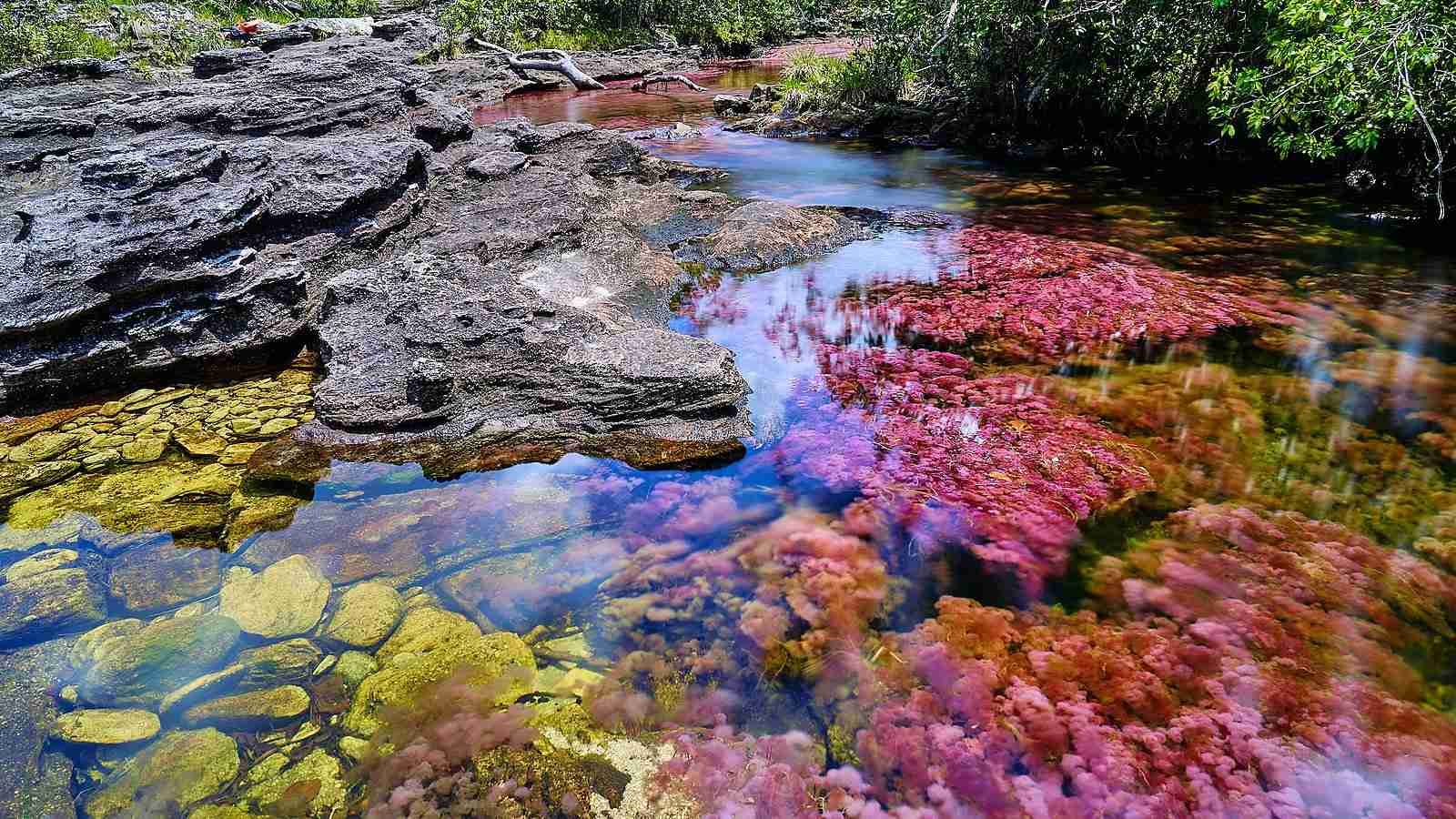
22. Colombia is known for being a multicultural society
When we asked our Colombian friends what makes Colombia so gay friendly, the one answer we always got is because of the immense diversity here. Colombians are so mixed that there isn't really a type of Colombian facial feature nor a type of Colombian skin colour.
European, Native American, Latin American, Caribbean, Middle Eastern and African peoples have all played a part in shaping and influencing the culture of Colombia. Along with these diverse communities, the cuisine of Colombia has been similarly influenced by the different people who live in Colombia just as much as the ingredients available.
The majority of Colombians (about 90%) are Catholic, so the country has many religious public holidays. However, the wide mix of holidays, festivals and carnivals are what really shows how fun and cheerful Colombian people are, ready to welcome anyone new with open arms!
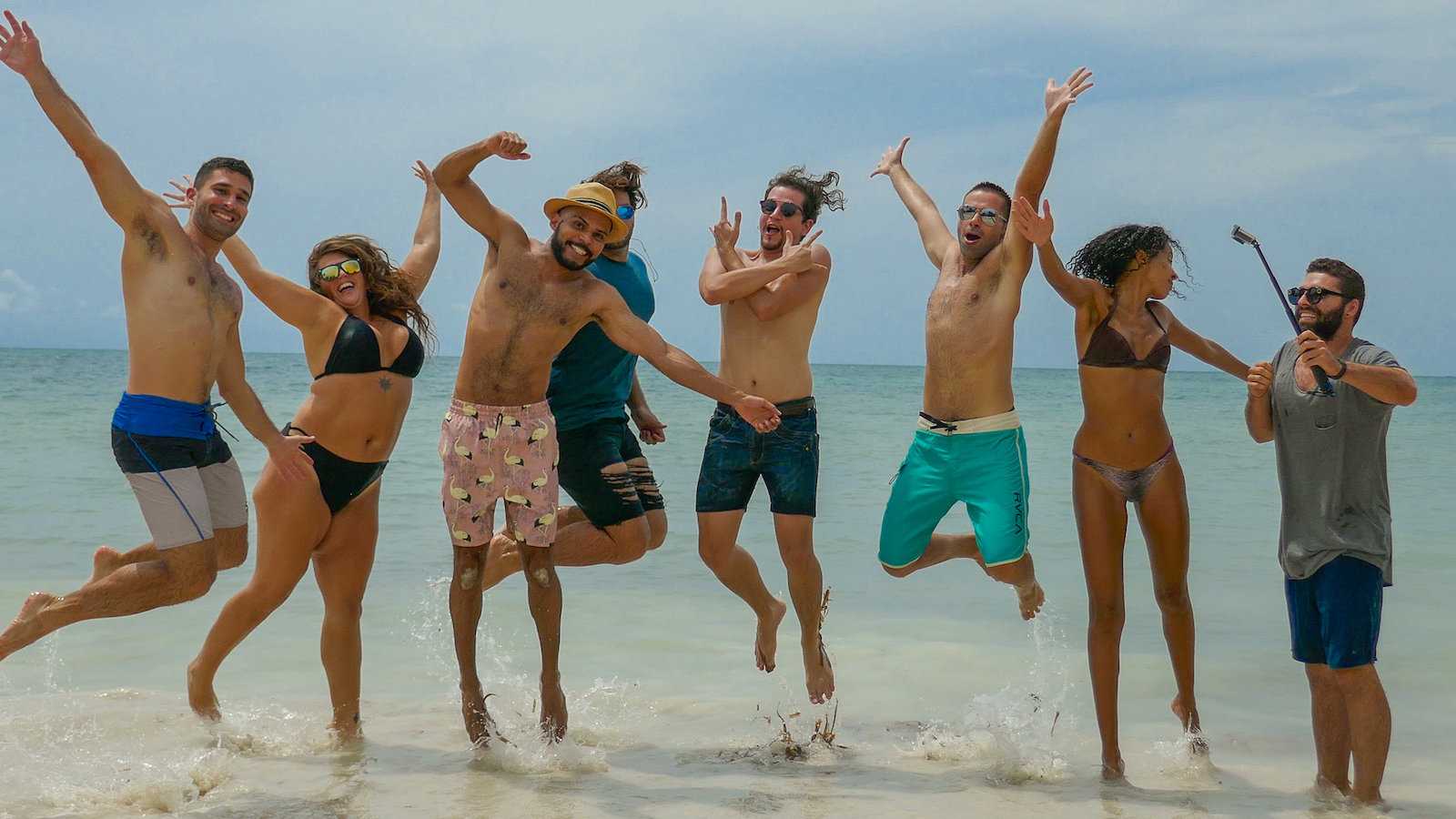
For more inspiration:
- Read what it's like growing up gay in Colombia
- Try our recipe for Colombian Coco Loco
- Or the delicious Colombian ajiaco soup recipe
- As well as Theatron, don't miss these great gay bars in Bogota
- If you're travelling with your lover these are our favourite romantic things to do in Bogota
- As well as some romantic activities for couples in Cartagena
- Don't miss our full gay country guide to Colombia as well
Like this post? Pin it
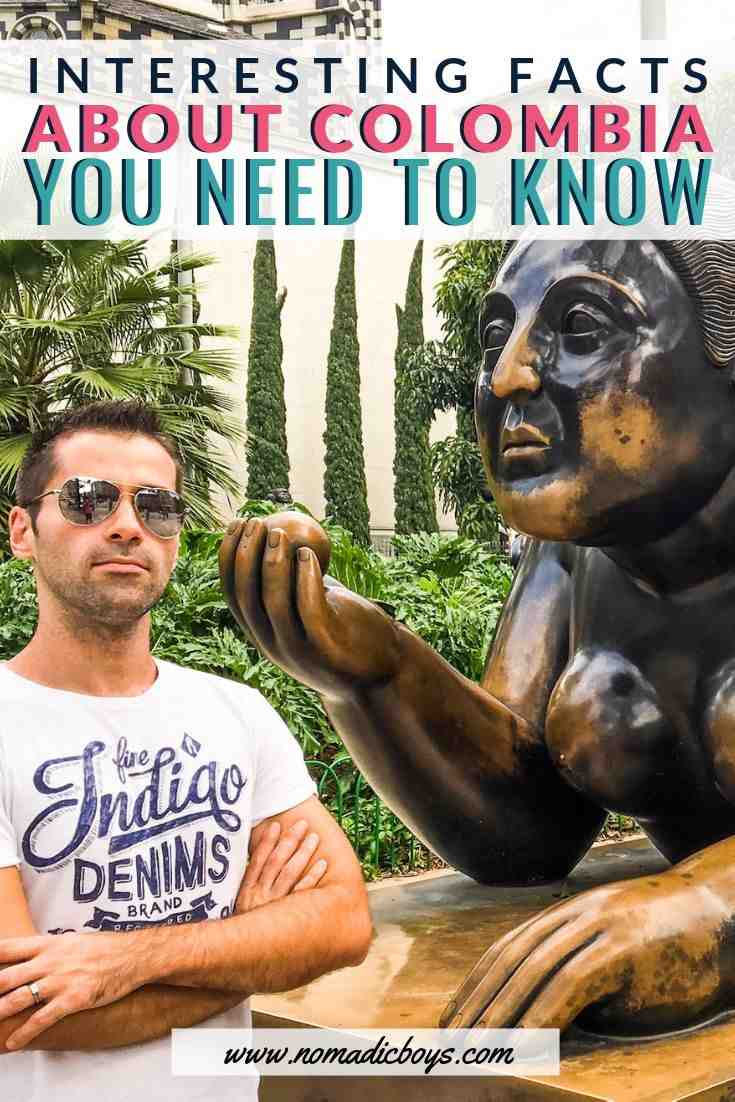
Happy travels are safe travels
We recommend you always take out a reputable travel insurance before your next vacation. What happens if you suffer from illness, injury, theft, or a cancellation? Many travelers forget about it and regret it when something happens. Better to pay a small price and have the peace of mind and not worry.

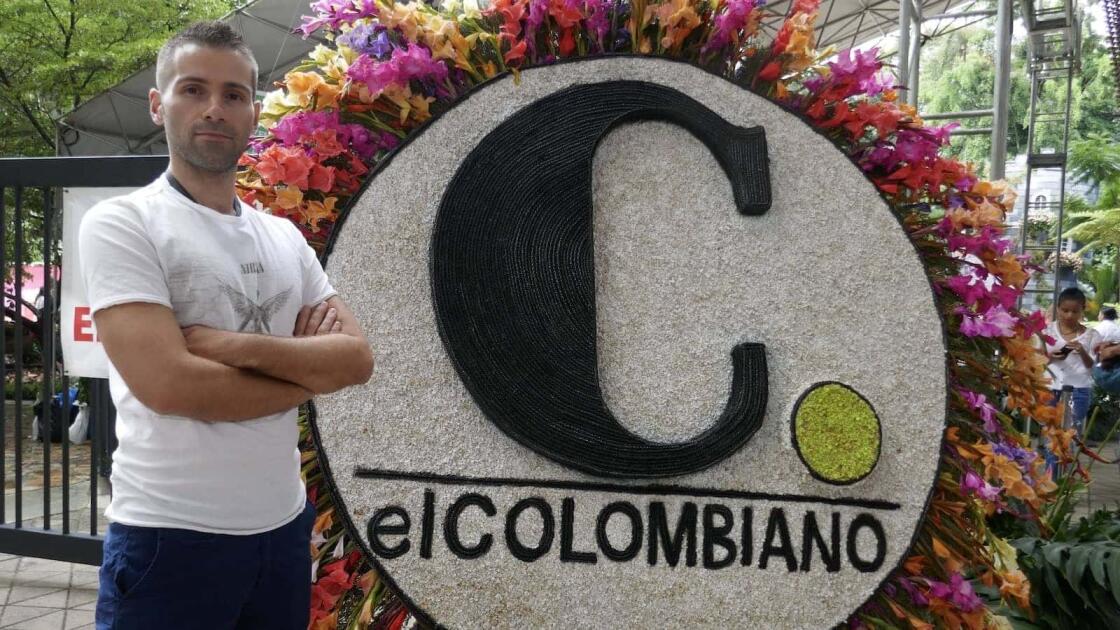
Nick Russell
Monday 31st of July 2023
Apparently, Colombianos have the biggest dicks on the planet. But there's no way of finding that out.
Stefan Arestis
Tuesday 1st of August 2023
Any primary sources or experience to back that statement up Nick? :)
Denny
Saturday 9th of December 2017
I just came across your blog a few minutes ago and I just say that you guys are great writers.
Nomadic boys
Saturday 9th of December 2017
Aww thx so much Denny :)
Ryan Biddulph
Saturday 2nd of December 2017
What a colorful place guys. The statue of the Roman soldier was.....interesting LOL. Colombia seems cool because any country where you are warned to keep your papaya with you works for me. House sitting here in East Harlem. Awesome neighborhood but definitely holding onto my papaya here too. As for the donkeys......
Ryan
Nomadic boys
Saturday 2nd of December 2017
Oh my!!